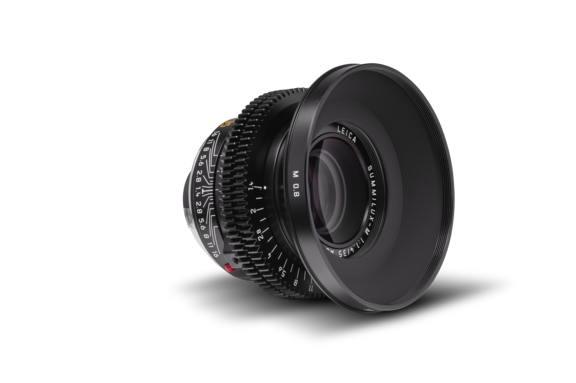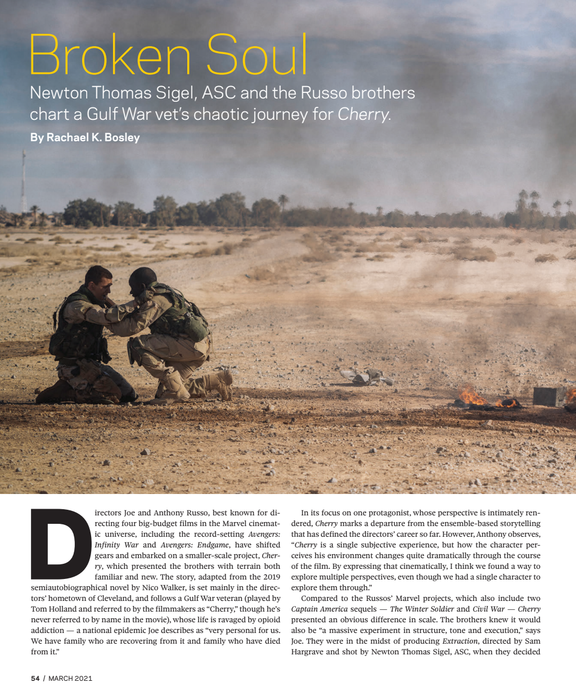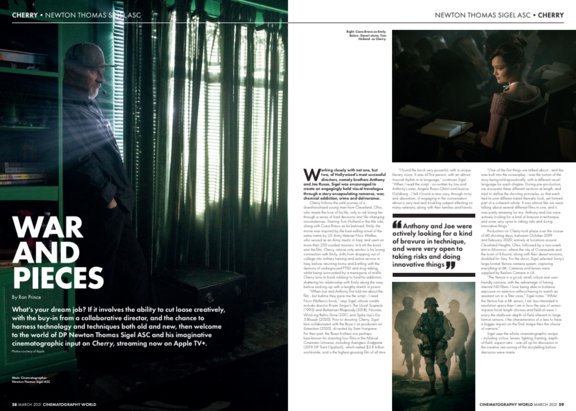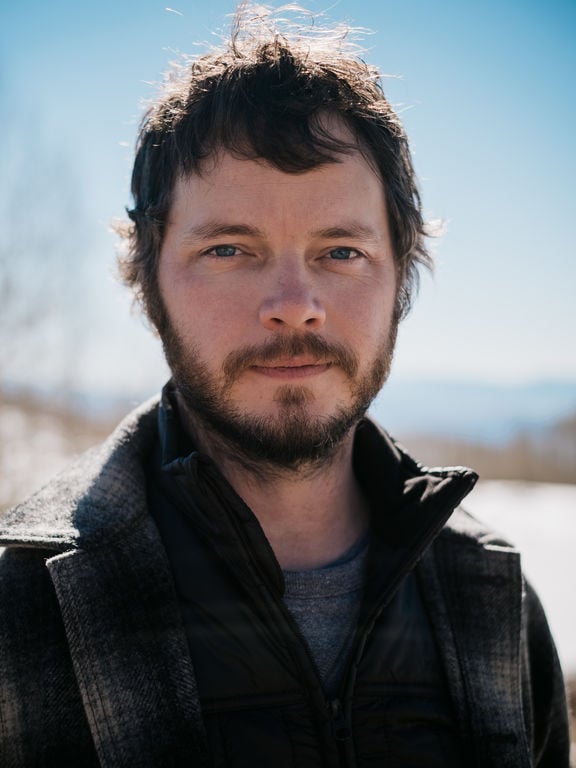CINEMATOGRAPHER NEWTON THOMAS SIGEL, ASC ON SET WITH LEITZ M 0.8 LENSES
Cherry (2021)
From features to series to commercials, cinematographer Newton Thomas Sigel, ASC brings his set of Leitz M 0.8 lenses with him on each job to help create unique looks, enable creative camera movement, and solve problems on set.
By Seth Emmons
Seth Emmons: When was the first time you used the Leitz M 0.8 lenses?
Newton Thomas Sigel, ASC: I think the first time I used the M 0.8 lenses and really dove deep into them was on the movie Extraction, which was directed by Sam Hargrave. We had a very complicated 12-minute oner where the cameras follows Chris Hemsworth and Rudhraksh Jaiswal’s characters in and out of multiple car chases, through an apartment building, across a roof jump, and down a fall from a balcony, all while Hemsworth’s character is fighting off attackers left and right. We needed a compact, low-profile camera and lens combination and the Leitz M 0.8 lenses were perfect for making those complex camera moves possible.
I’ve known about the Leica M lenses ever since I fell in love with the great iconic photographers like Robert Frank who lived on the Leica cameras. The still lenses have been around for decades and have gone through various iterations of coatings and constructions.The M 0.8 lenses feature the modern glass and since Extraction I’ve fallen in love with this version and even have a full set of my own now.
Can you speak to what it is about the lenses that have made them a favorite in recent years?
I find them to be a really unique lens package with both physical and visual characteristics that you really can’t find in other lenses. Firstly, there’s the low-profile size of them. They’re tiny and lightweight, but, at the same time, they cover large format sensors with only minimal vignetting. I find the fall off minimal and pleasing. In that way, you get the best of both worlds.
In terms of look, I consider them to be relatively modern, but not sharp or harsh. There’s a kind of cleanliness to the image in the sense that it feels unaffected. I hate to use the word “organic,” so I’ll say the M 0.8 lenses have a very naturalistic feel. There’s no forced contrast to them and the color balance is relatively neutral.
Can you share some examples of when you’ve used them in recent years?
I’ve used them on a bunch of commercials, and of course Extraction, but one project where I used them for a deliberate look was Cherry, directed by Joe and Anthony Russo. The film deals with the Iraq War and the ensuing PTSD and drug addiction of our main character, played by Tom Holland. I used the Todd AO anamorphic lenses to create a very strong look for most of it. The Todds can be very dreamy and impressionistic. By today’s standards - technically horrible. I loved them. But, when we were in Morocco shooting the Iraq War scenes, I wanted to create a different world view, more of a documentary film style, like a photojournalist covering the war. The Leitz M 0.8 lenses were the perfect choice for that aesthetic. And knowing that those scenes would involve more rough and tumble camera movement and be shot primarily handheld or Steadicam, the lenses were a very user-friendly choice as well.
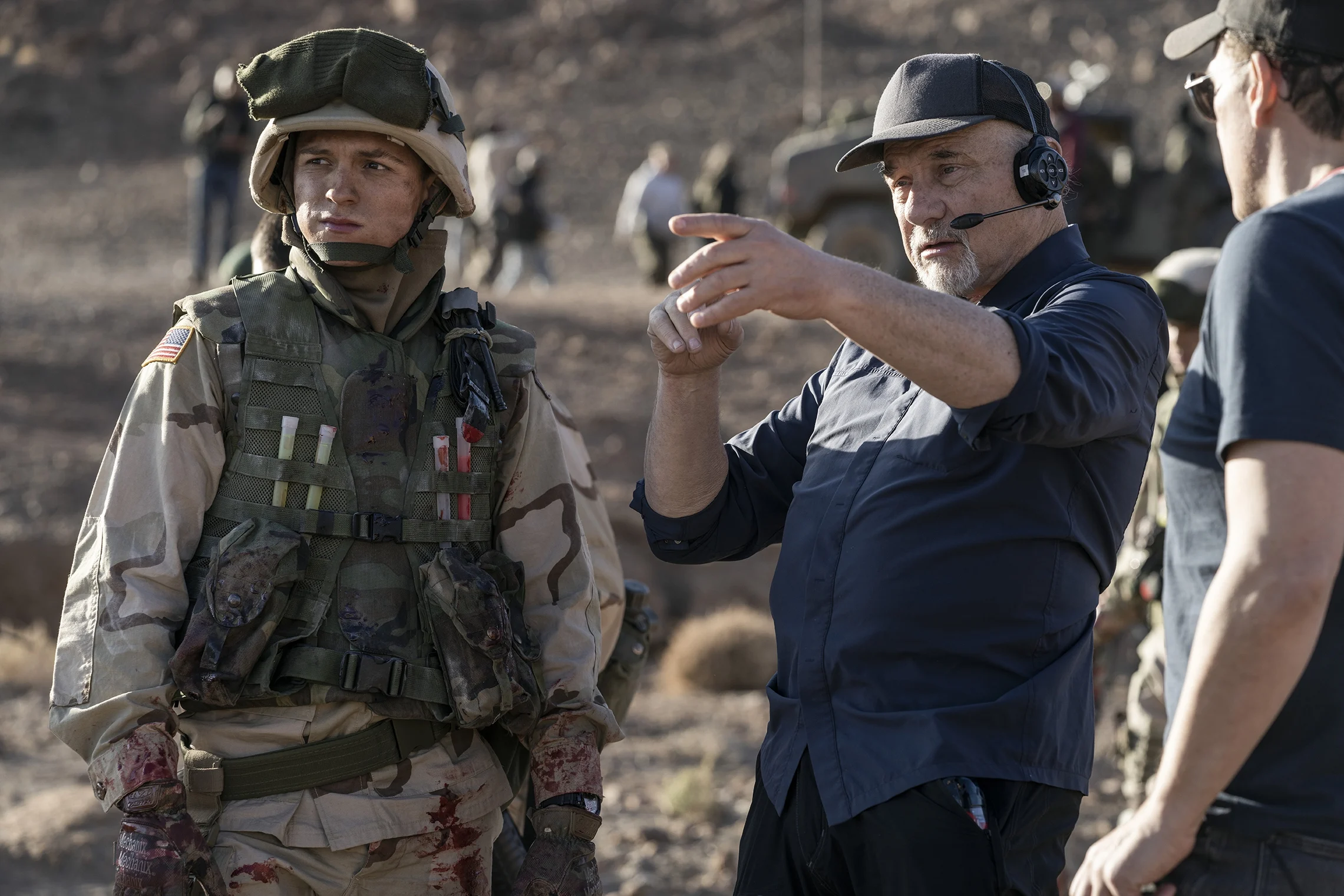
Recently I completed a new Amazon series called Citadel where I used them in a flashback sequence to create a very distinct look from other parts of the show. And I’ve used them a lot to facilitate smaller rigs. I’ve never done an entire film with them, but I always have them on hand for different situations. Sometimes the lens changes can take a little longer to swap camera mounts or line up the focus motors since the lenses are so small, but I love that I can carry eight high-speed lenses in a case that fits under the seat on an airplane.
Do you like to shoot them toward the wide open end, or do you prefer to stop down a bit?
It’s definitely situational, but I do tend to go toward the f/1.4 maximum aperture. I find that the background falling off is a very important aspect of the image that I like to control. In general, I’m trying to separate my subjects from the background and depth of field is one of the most traditionally effective ways of doing that.
Color separation is also very important to me, and one of the most powerful tools in creating the emotional impact of the image. I think that while the trend of heavily desaturated filmmaking is still with us, there seems to be a renewed interest in how color palette, and contrast through color, can affect storytelling.
The Leica M lenses have been limited to photography for so long and are only in recent years has that glass been available to cinematographers via the M 0.8 series. When you think about still images compared to moving images, where do you see creative similarities and differences?
Going back to my days shooting film, as opposed to digital, one big difference I've always found between still photography and cinema is texture. A still photograph can have beautiful softness, grain or atmosphere, which becomes an integral part of the image. It doesn’t move. It’s a frozen moment in time, and how long the viewer looks at it is up to them. In the cinema, the grain moves, and the effect is totally different. I think that’s one of the reasons that a lot of us use smoke or atmosphere on set, so we can create texture that doesn’t move.
After spending decades to make film less grainy, and lenses sharper, the transition to digital has turned things the other way around. We’re working with and against an increasingly scientific and perfect image capture via digital sensor and looking for ways to bring texture back into the image. It’s the reason we’ve seen the use of flares and lens imperfections become more and more prevalent.
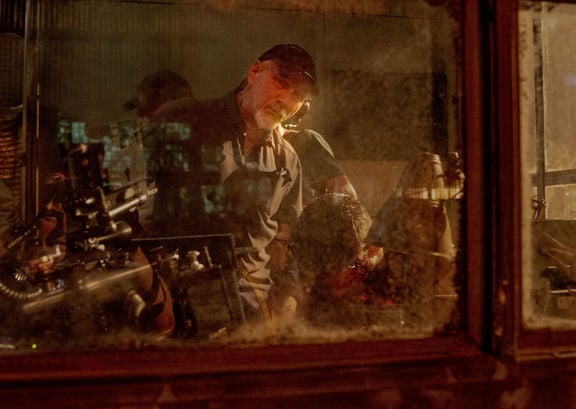
Having said that, the Leitz M 0.8 lenses, like most of the modern Leica lenses, are technically very clean. Yet, they have a kind of gentleness to the way the focus falls off toward the background, toward the edges that works very well on digital. It’s just a very unaffected look that is subtle. It’s not a super sharp image, nor is it like one of these faded, uncoated, veiling glare images. In fact, if you’re looking for a lot of flare you won’t get it with these lenses. But, if you’re looking for something that has a clean, uncontentious quality without being overly sharp or contrasty, these are really beautiful lenses.
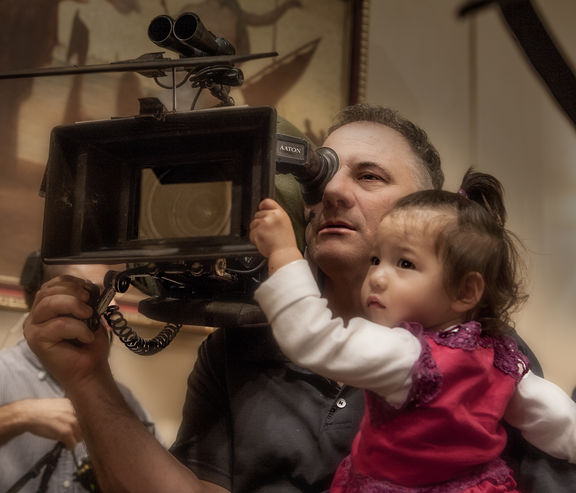
Overview
DoP Newton Thomas Sigel
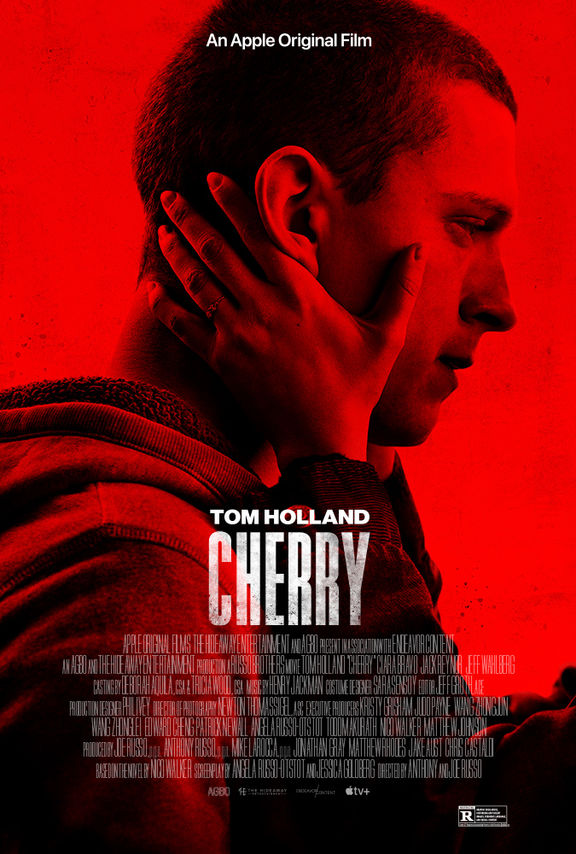
Cherry
2021 | movie
DoP Newton Thomas Sigel, ASC
Director Anthony Russo | Jo Russo
Leitz lens M 0.8
Camera Sony Venice
Production Companies AGBO | Kasbah Films | The Hideaway Entertainment
Awards 3 wins & 4 nominations
Equipment Supplier Keslow Camera | Los Angeles
Country USA
Articles
Lens used
M 0.8
Legacy
Unique and small. A new way to look at light, skin and color.
